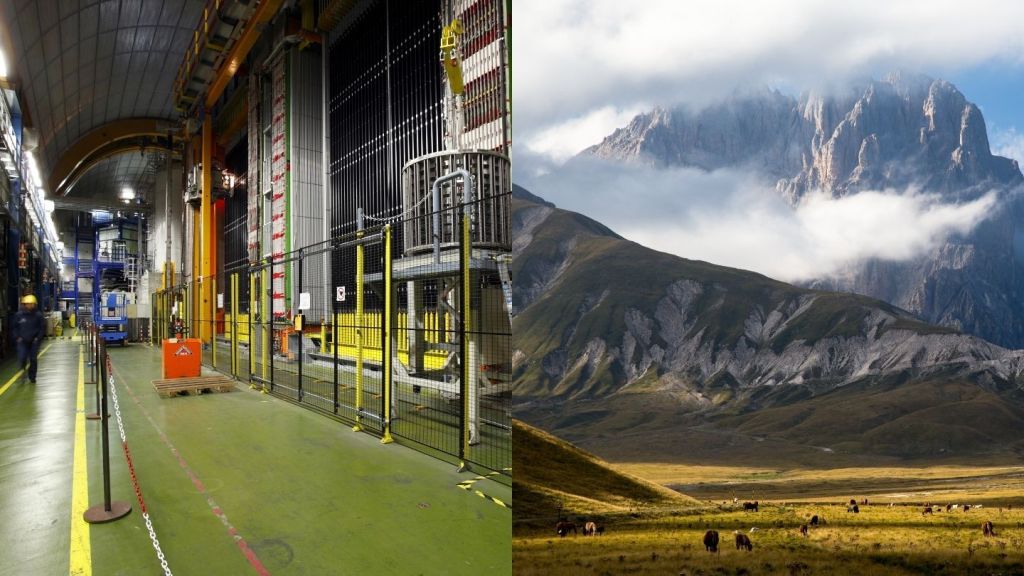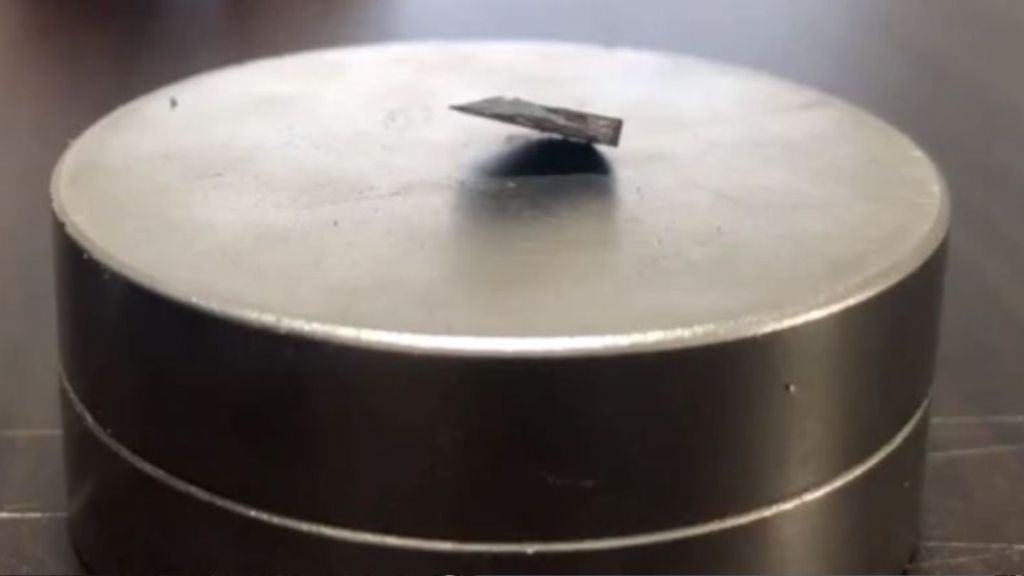You may have heard that you are made of “star stuff,” which refers to the amazing fact that our bodies contain elements that were forged in the cores of long-dead stars. But there’s also a tiny sliver of you—and the universe—that was minted some 13.7 billion years ago, before the first stars were born.
This remnant of our cosmic origins is deuterium, a hydrogen isotope that was formed in the minutes after the universe was born. Now, scientists working in a laboratory located deep under Italy’s Gran Sasso mountain have clocked the rate at which deuterium “burns” by experimentally recreating an important nuclear fusion reaction that occurred at the beginning of time.
Videos by VICE
The experiment sheds light on the murky environment and rapid expansion that defined the newborn universe, according to a study published on Wednesday in Nature.
“Our measurement settles the most uncertain ingredient in a sequence of steps usually referred to as Big Bang Nucleosynthesis,” said Carlo Gustavino and Sandra Zavatarelli, nuclear physicists at Italy’s National Institute for Nuclear Physics who co-authored the study, in a joint email.
“We are really excited about our results, which will certainly be of interest to the community of particle and nuclear physicists,” the researchers added.
Deuterium is “an excellent indicator of cosmological parameters in the early universe,” according to the study, because its abundance in that era is intertwined with the density of normal atomic matter. The amount of deuterium that was formed by Big Bang Nucleosynthesis—and the rate at which it took to shapeshift into other atomic forms—are important pieces in the puzzle of our cosmic origins.
Scientists are in dire need of these types of indicators because they can’t directly observe the universe’s formative moments, as they are beyond a cosmic horizon. The oldest light in the universe, called the cosmic microwave background, appears roughly 400,000 years after the Big Bang, which means scientists have to recreate the conditions of the early universe in the laboratory to resolve its mysteries.
For this reason, physicists have concocted all kinds of wild ways to measure and estimate the abundance and behavior of deuterium in the minutes following the Big Bang. Central to this equation is a process called deuterium burning or fusion, in which a deuterium nucleus and a proton team up to make a helium-3 nucleus.
While past studies have measured this rate, it’s a tricky reaction to precisely capture because of the pesky interference of cosmic ray muons, which are particles spewed out by energetic sources as stars, supernovae, or tidal interactions of normal matter with black holes. Cosmic rays hurtle through the universe at the speed of light, and they can produce false positives of deuterium fusion as they pass through laboratories on Earth.
One way to avoid the interference of cosmic rays, of course, is to move underground. Like, way underground.
Enter: The Laboratory for Underground Nuclear Astrophysics (LUNA), a research facility located nearly a mile under the rocky massif of Gran Sasso, Italy. The cover provided by the mountain amounts to a “million-fold reduction in cosmic-ray muons” that allowed LUNA researchers to “probe the physics of the early universe,” according to the study.
“Such a high-precision measurement has been a real challenge since under laboratory conditions the reaction doesn’t happen very often and cosmic rays reaching the Earth’s surface hinder the detection of the signal of interest,” Gustavino and Zavatarelli said. “The LUNA experiment is uniquely well-placed to overcome this problem as its location under the Gran Sasso mountain greatly reduces the cosmic background.”
While working shifts under the mountain, LUNA researchers shot trillions of protons per second at a deuterium nucleus using a particle accelerator under the mountain. On rare occasions, the deuterium absorbed a proton and transformed into helium-3.
“There were moments of discouragement because only a very precise measurement was relevant for cosmology; we spent a lot of time cross-checking every detail of our experimental setup and instrument calibration,” Gustavino and Zavatarelli recalled. “The data taking lasted several years; each of us spent tiring weeks underground, including the weekends.”
At last, the hard work paid off with the new study, which reports that the rate of this reaction falls within the same range as other experimental estimates of deuterium burning after the Big Bang.
The researchers said that they were “proud of the outcome” and “very happy” with the results, which bolster the standard cosmological model of the universe: our best explanation for the weird structure that we find ourselves in. But there are still plenty of secrets about the early days of the cosmos left to uncover, and the LUNA team aims to continue studying exotic nuclear reactions in their underground lair.
“Our study settles a key issue related to primordial deuterium abundance, However, other puzzles still remain even within [Big Bang Nucleosynthesis],” Gustavino and Zavatarelli said. “In particular, it is still unclear why astronomical observations report a three-times larger abundance of primordial lithium compared to calculations.”
“Nuclear reaction studies so far seem to exclude a solution based on improved nuclear reaction rates and [Big Bang Nucleosynthesis] calculations seem reliable in this concern,” the researchers added. “Perhaps, the answer is to be found in new physics or more likely in an improved understanding of astrophysical processes.”




